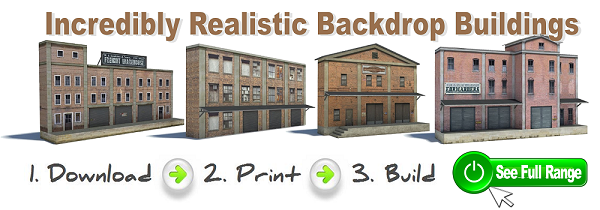What Is So Great About DCC Systems
When Operating Model Trains?
There are many advantages and benefits of using a DCC layout for controlling your locomotives over the traditional DC model. Some of the main features that make DCC a more feasible choice for users around the globe include:
- The track is simplified with the reduction of extra wiring and switches
- DCC gives you an automatic edge and you can individually control the speed, direction, lighting and other devices installed on the track. This makes you, in simpler words, the driver of your train! On the other hand, DC systems just let you power up and control the track and you cannot do more than that to improve the functionality.
- You can increase the number of trains on your track without any additional wiring and control setup.
- The user has greater control over the train and the surrounding devices on the track.
- DCC is a standard, so the equipment you purchase does not get obsolete with time. Also, you can use decoders and controllers by different brands on the same layout as they all mostly work with each other without any hassle.
- There is a single device for control and you do not need separate switches for different operations.
© Copyright https://www.modelbuildings.org All rights reserved.
DCC Systems when operating Model Trains
In a nutshell, A DCC layout lets you run the trains in an easier to follow and realistic layout.
- Even if you have an existing layout, you can intensify and enhance the experience. And if you are a new player just trying out the railroad modeling experience, it is definitely the thing that you are looking for!
- It is internally computer based, mainly for the decoder control and throttle displays, but you do not essentially need to have computer experience to run trains on a DCC layout. Its far less technical and tons more enjoyable and easy for beginners!
- There is just one dedicated system that is designed for control and design. So you do not need to worry about multiple units and complicated setups!
- The price range is not as high; you can fit it into your budget just as soundly as you could with the conventional DC model railroads.
- The trains can be controlled through walk-around cabs, making the experience more exciting and easy!
- It can easily co-exist with older DC layouts – you do not need to rewire or redesign the layout!
- No loss of DC operation, i.e. the locomotives will be able to run on both DC and DCC!
- Say no to complicated wiring – the DCC layout just finishes the deal with two basic wires!
Regardless of whether you are operating with DC or DCC, don’t run your trains too fast. This is something most beginners do. Fast trains have more chance of derailing and they don’t look so real. On a real railroad the locomotives build up speed gently and they slow down gently to a smooth stop. They don’t take off like a rocket!
When purchasing a locomotive with a decoder installed, look for the wording “DCC equipped”, or “Factory installed decoder”, or “W/DCC”, or wording like that.
Be careful though, because the words “DCC Ready” usually means that the locomotive is capable of having a decoder installed and that one is NOT already installed. I repeat, “DCC ready” usually means there is NO decoder fitted, but the wiring inside the locomotive is terminated with a socket, ready for addition of a “Plug and Play” decoder. This is an easy installation, no soldering.
If you are still unsure whether or not a locomotive has DCC status, you can try this test. Place the locomotive on the program track of a DCC system. See if the command station can read CVs… and if it can’t… then no decoder is fitted. Also, without a decoder fitted, the loco would “hum” with the throttle set at “0”.
If the locomotive responds to the throttle on a DC system, then either there is NO decoder, or the locomotive may have a decoder that has analog operation enabled.
If in doubt, it is always best to get clarification from the hobby store staff, or from the manufacturer or person supplying the locomotive.


